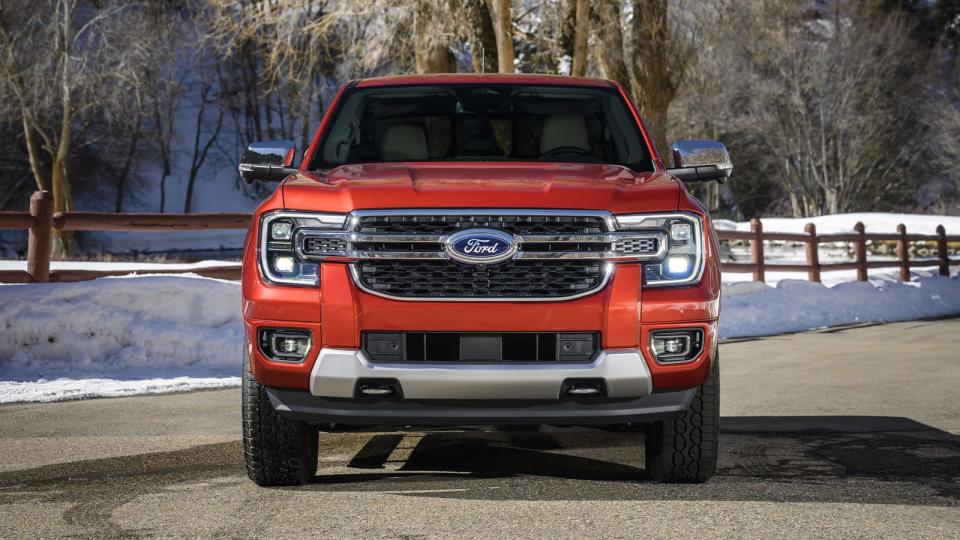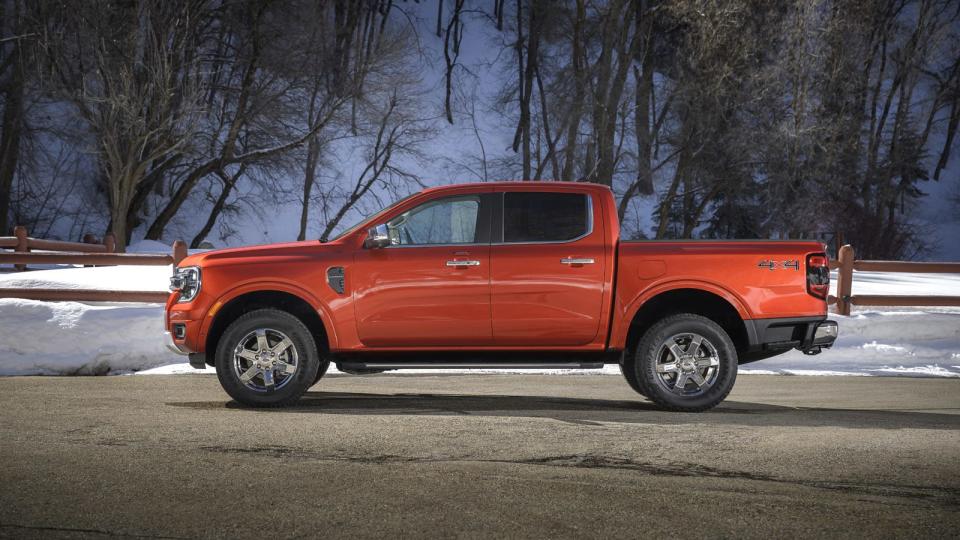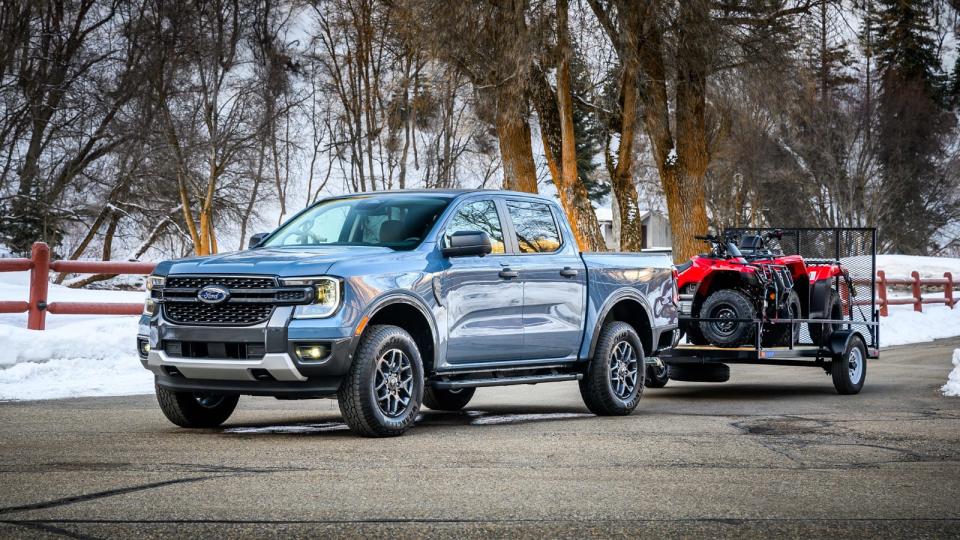2024 Ford Ranger First Drive Review: Now with more American flavor

SALT LAKE CITY – The 2024 Ford Ranger is all-new, but it isn’t just for you, America. While its various midsize pickup competitors are effectively exclusive to North America, leaving different trucks to meet the needs of various global markets, the Ranger sees duty across the globe. In fact, it’s already been on sale in places like Great Britain, Australia and Thailand for months. I did a double take when I sauntered past one in central London last September.
Now, if you know anything about the last-generation Ford Ranger, this may not come as a surprise. That too started life abroad long before coming ashore here, albeit with new underpinnings beneath a copy-paste body and cabin. It can be argued those carryover elements were what made the Ranger a less-than-successful entry. It was good to drive, plenty capable and we even put it first in a midsize truck comparison test, but the interior was just as dated as the global Ranger’s first model year would suggest (2011), while the styling spoke to different truck tastes. To put it bluntly, Americans want their trucks to look all rugged and tough. Folks in Iceland and Down Under? Not so much.
Well, that was the assumption, at least, including by those within Ford. Nevertheless, Ford went out on a limb with a common burly-and-tough design for every market the next-generation Ranger would service. That includes a significant 2-inch increase in wheelbase and width that gives it notably different proportions than the tall, skinny visage of not-from-around-here pickups like the last-generation Ranger. Ford brand manager Andrew Cascaden says it was theorized that this more American direction would end up resonating with other markets, but it was still a hypothesis. Turns out, the reception exceeded expectations. Rugged and tough works in Bangkok and Sydney, too, it seems.


American customers were the ones specifically demanding those two adjectives, however, along with various requests for the interior that I’ll get to in a moment. From an aesthetic perspective, the wider stance, tougher front end and creased fenders do much of the macho heavy lifting. It looks good without trying too hard, and without making the standard Ranger look totally naked once you’ve seen the Ranger Raptor (its story is coming March 21).
From a mechanical perspective, the new Ranger doesn’t represent a huge rugged-and-tough difference. The frame is improved, not all-new, because remember, it wasn’t as old as the body on top. What we’re really talking about, then, was a perceived deficit in toughness that didn’t align with the Ranger’s actual capability. Nevertheless, the new Ranger has greater ground clearance and better approach/departure angles. Its maximum payload is now 1,805 pounds (base engine and rear-drive) and 1,711 (base engine, four-wheel-drive), up from 1,770 and 1,560, respectively, for the outgoing Ranger SuperCrew. Its max towing capacity of 7,500 pounds, regardless of engine and drivetrain, is exactly the same as before. It’s also 1,000 pounds greater than the Toyota Tacoma, but 200 pounds short of the Chevrolet Colorado. Someone at GM probably just did a fist pump.
Should you score toughness by what’s going on under the hood, though, the new 2024 Ranger can unquestionably be the more muscular specimen. Emphasis on “can.” Once again, the standard engine is a 2.3-liter turbocharged inline-four that produces 270 horsepower and 310 pound-feet of torque. That crushes the base GM and Toyota engines, falls just a tiny bit short of the Tacoma’s mid-grade choice, and would be painfully defeated by their burliest upgrade choices. Don’t be so quick with another fist pump, though, because the 2024 Ranger now offers a choice in engine. There’s the Raptor, of course, which pumps out a class-best 405 hp and 430 lb-ft from its 3.0-liter turbo V6, but we’ll get to that in a couple days. There’s also an option for the standard Ranger, however: the same 2.7-liter turbo V6 offered in the Bronco good for 315 hp and 400 lb-ft. That bests all in the segment but the Colorado ZR2 (less power, more torque) and the upcoming Tacoma hybrid (more of both). Unfortunately, we did not get a chance to test this engine during our short time with the standard Ranger. Pricing has also not been announced for it, so “to be continued” on that front.
Despite these new offerings and the above comparisons, the 2.3 remains an impressively smooth engine with plenty of torque to make you wonder, at least in a vacuum, if something burlier is really needed. The Tacoma’s turbo-four feels a bit agricultural by comparison. The standard 10-speed automatic proved to be similarly fault-free despite throwing multiple grades at it during the test drive. The manual mode also happily held a selected gear when travelling downhill.

The Ranger also demonstrates ample refinement in terms of its ride. There is the expected body-on-frame wiggling and jiggling over bigger bumps, but the damping is spot-on, sopping up bumps yet controlling rebound exceptionally well. It feels sophisticated. Chassis response and body motions on winding mountain roads were also very good for a small truck, but the steering is too numb, especially on center, and is a letdown given the rest of the dynamic package. Selecting the Sport mode tightens things up a bit, but the Ranger's steering was better before. Could it be better now? Ask me again in a couple days.
It's probably worth mentioning here that the Ranger doesn’t just have a steering wheel, but a steering knob as well. Inherited from the F-Series, the Ranger is available with the Trailer Reverse Guidance system that allows you to use the knob surrounding the 4x4 controls to steer the truck in reverse when attached to the trailer. Just look in the side mirrors or at the rear/side camera feed, and turn the dial in the direction you want, just as you would the steering wheel when facing forward. No need to do the usual mental gymnastics normally required to back up a trailer. I was indeed able to more precisely reverse a trailer through a couple chicanes worth of narrowly spaced cones. You can see it in action below.
View this post on Instagram

 Yahoo Autos
Yahoo Autos 
